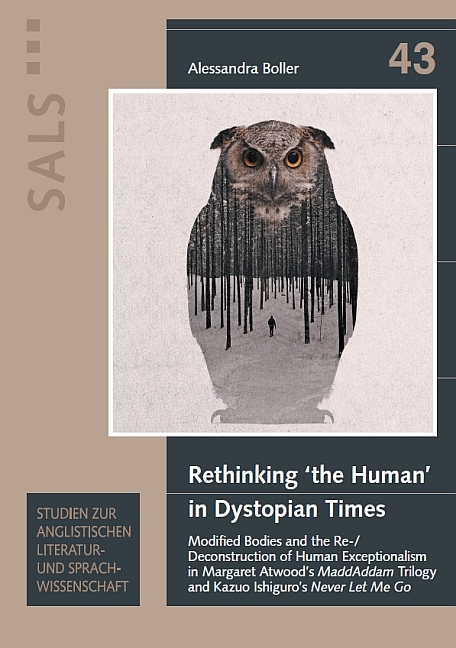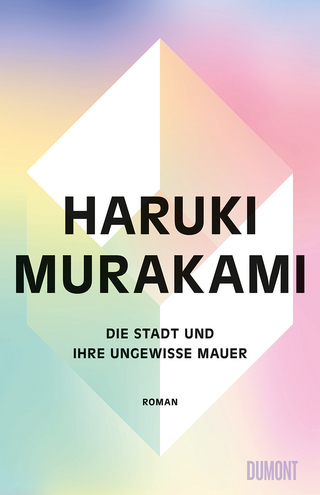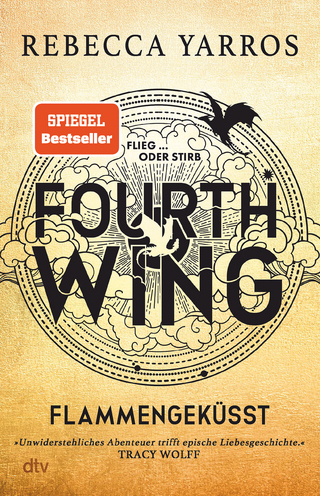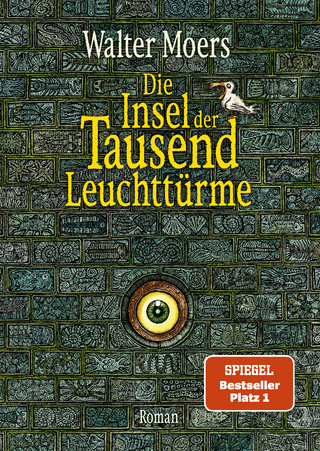Rethinking 'the Human' in Dystopian Times
WVT Wissenschaftlicher Verlag Trier
978-3-86821-753-7 (ISBN)
Table of Contents
1 Dystopian Fiction - a Flourishing Genre and Its Potentials 1
1.1 Dystopian Texts and Motifs 1
1.2 Between Constructed Stability and Subversive Deconstruction:
Varieties of Non/Post/Human Bodies 6
1.3 Outline and Objectives 17
2 Definitions and Surveys of Utopian, Dystopian and (Post-)Apocalyptic Fiction 23
2.1 Defining Utopia and Dystopia 23
2.2 Defining Apocalypse 25
2.3 A Concise Survey of Utopian and Dystopian Fiction 26
3 Body Discourses, Demarcation Strategies and the Regulation of the Human Body 39
3.1 Normativity, Normalism and the Normal Ideal 42
3.2 Exceptional, Deviant and Dangerous Human Bodies 45
3.3 Technologies of Power 54
3.4 The Normal and the Pathological 58
3.5 Problematising the Stable Western Body 61
4 Human Exceptionalism, Its Strategies and Its Challenges 67
4.1 Human Exceptionalism and 'the Animal' 68
4.2 New Bodies Challenging 'the Human' 82
4.2.1 Genetic Engineering and Its Media Coverage 85
4.2.2 Organ Transplantation, Eugenic Cloningand Dystopian Extrapolations 90
4.2.3 The (Post)Human and Unstable Bodies,Blurred Boundaries and Symbolic Meanings 94
4.3 (Bio)Ethics, Sympathy and Personhood 100
4.3.1 Ethics and Bioethics 101
4.3.2 Sympathy and Forms of Speciesism
104
4.3.3 Concepts of Personhood 110
5 The Body Modified and Its Implications in Eugenic,
Biopolitical and Biotechnological Dystopian Fiction 114
5.1 Eugenics and Dystopia 114
5.2 Human/Animal Splices in Margaret Atwood's SpeculativeMaddAddam Trilogy 121
5.2.1 The Segregated Society, Biotechnology andthe Consumer Cult of the Body 124
5.2.1.1 Rule, Science! A Segregated World Controlledand Created by Genetic Engineers 126
5.2.1.2 The Body as Capitalist Consumer Object 136
5.2.2 Dangerous Bodies and the Man-Made Apocalypse 148
5.2.2.1 The Anthropocene and Negative Human Exceptionalism 149
5.2.2.2 The Apocalyptic Waterless Flood and Its (Human) Survivors'Coping Strategies 156
5.2.2.3 Atwood's Ambiguous Updating of the 'Reckless Scientist' 161
5.2.3 Human/Animal Splices and the Redistribution of Human Properties 164
5.2.3.1 Inverting Monstrosity 165
5.2.3.2 Human/Animal Splices and Human/Posthuman Interaction 170
5.2.3.3 The Difficult Implementation of Inter- and IntraspeciesDemarcation Strategies 180
5.2.3.4 Religion and Mythmaking, Language and Culture,Death and Mourning 193
5.2.4 Interim Conclusion: Margaret Atwood's Ustopian Reassessmentof 'the Human' 205
5.3 The Clone in Literature and Media 210
5.4 Clone Bodies in Kazuo Ishiguro's Never Let Me Go 215
5.4.1 The Clones' Education and the Establishment of Demarcation Strategies 216
5.4.1.1 Heterotopias, Dystopian and Utopian Elements 218
5.4.1.2 Difference and Dichotomies 224
5.4.2 Normalising Practices, Biopower, Eugenics and Discrimination 233
5.4.2.1 The Donation Programme and the 'Humane Movement' 233
5.4.2.2 The Maintenance of the Individual Bodyand the Body of the Population 237
5.4.2.3 Threatened (Bodily) Boundaries 243
5.4.3 Is the Clone More Human/e Than 'the Human'? 247
5.4.3.1 Mechanistic Views of the Clone Body
| Erscheinungsdatum | 12.07.2018 |
|---|---|
| Reihe/Serie | SALS ; 43 |
| Verlagsort | Trier |
| Sprache | englisch |
| Maße | 148 x 210 mm |
| Gewicht | 511 g |
| Themenwelt | Literatur ► Fantasy / Science Fiction ► Fantasy |
| Geisteswissenschaften ► Sprach- / Literaturwissenschaft ► Anglistik / Amerikanistik | |
| Schlagworte | Atwood, Margaret • Dystopian Fiction • Human Exceptionalism • Ishiguro, Kazuo • Posthuman |
| ISBN-10 | 3-86821-753-3 / 3868217533 |
| ISBN-13 | 978-3-86821-753-7 / 9783868217537 |
| Zustand | Neuware |
| Haben Sie eine Frage zum Produkt? |
aus dem Bereich




